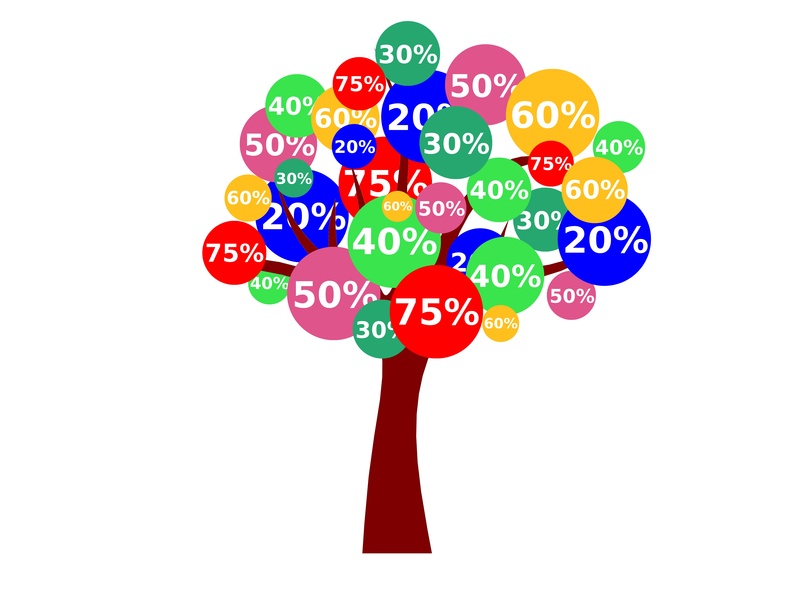Dynamic pricing on websites: illegal or unfair?

Elizabeth Dwoskin from the WSJ recently published an interesting piece on dynamic pricing (or discriminatory pricing) entitled “Why You Can’t Trust You’re Getting the Best Deal Online“. The article refers to a new study of top e-commerce websites which concluded that these practices are more widespread than expected: the study tracked searches on 16 popular e-commerce sites, of which six used dynamic pricing techniques without alerting consumers of this fact.
What is dynamic pricing?
Dynamic pricing, also known as “adaptive pricing”, “dynamic pricing” or “discriminatory pricing” or first-degree price discrimination, is defined as a practice where organizations attempt to perfectly exploit the differences in price sensitivity between consumers. Dynamic pricing is an old practice that has ben around forever: for example, if you go to a flea market, the price for an item will change for each potential customer, depending on the negotiations of the parties and depending on what each customer is willing to pay at a specific time, in light of given circumstances (volume purchased, etc).
This practice is recently making a come back. With consumer profiling, consumers can be sorted as individuals or groups by retailers and this makes it possible for the retailers to create a pricing scheme tailored to individual customers based on their purchase or online histories. For example, a retailer could create a pricing scheme tailored to each customer by offering a different basket of services to distinctive groups of clients and display a price (higher or lower) which would be based on the profile of the potential buyer. Economically speaking, since a unique price for all customers would not maximize the retailer’s profit (since certain customers may be willing to pay more than others) maximizing the profit would only be reached if each product is sold for the maximum price that the individual is willing to pay.
Some businesses have attempted to use this practice. For instance, it was reported a few years ago that Coca-Cola had tested dynamic pricing in vending machines where prices would fluctuate based on the surrounding temperature since soft drink may be worth more when it is hotter outside. Amazon was also suspected of using such practices in 2000, using cookies to identify the visiting consumers. Staples Inc. was found using dynamic pricing based on users’ locations and Orbitz has also been accused of price discrimination in the past, charging Mac users as much as 30% more than PC users for certain products. In the offline space, retailers could profile a customer in real-time (based on an RFID read of objects carried and by cross-referencing to past buying patterns) and they may offer differential service based on the “value” of the customer to the retailer.
Is dynamic pricing illegal?
Many have raised their concerns with online businesses charging certain products differently depending on the profile of the online user. Adaptive pricing could be argued to raise data protection issues in the sense that personal information (profile information of a user) is used to take a decision that may have an impact for the individual (i.e. the price offered for a product). Moreover, this is usually done without the knowledge of the individual, so there is often a transparency issue. In the U.K., the OFT has expressed its concern over price discrimination, especially if consumers are left in the dark.
One could claim that certain privileged customers may actually benefit from this practice but some claim that ironically, more loyal shoppers may end up paying more for products than others when online retailers develop the ability to track the customer’s product desire and his or her ability to pay. As a matter of fact, it is not clear that the value that this creates for organizations is passed on to individuals, as suggested by Janet Gertz:
By profiling consumers, financial institutions can predict an individual’s demand and price point sensitivity and thus can alter the balance of power in their price and value negotiations with that individual. Statistics indicate that the power shift facilitated by predictive profiling has proven highly profitable for the financial services industry. However, there is little evidence that indicates that any of these profits or cost savings are being passed on to consumers. For this reason, and because most consumers have no practical ability to negotiate price terms for the exchange of their data, many characterize the commercial exploitation of consumer transaction data as a classic example of a market failure.
When is dynamic pricing acceptable for customers?
In some situations, consumers may be more accepting of these practices, depending on what criteria are taken into account in order to personalize the price. Successful dynamic pricing stories have been reported. According to Werner Reinartz, a professor at INSEAD in France, for dynamic pricing to be successful, five conditions must be met. He articulates the view that customers must have a difference in their willingness-to-pay, the market must be segmentable, there must be a limited potential for arbitrage, the cost of segmenting and policing must not exceed revenue increases due to customization and the practice must not breed violations of perceived fairness.
This content has been updated on October 26, 2014 at 19 h 21 min.